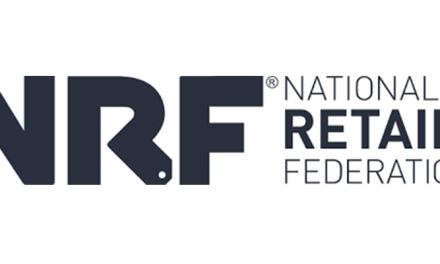Written by Gina DeBlanco
I have worked with the Fortune 1000 for my entire career. My success has been based on a clear understanding of my client’s needs and a commitment to their success. Customer relationships are based on trust. This fact has never dithered and I never take this for granted.
The year 2014 will bring with it many industry trends. There will be faster, sleeker pad/tablets, ever-higher-resolution imagery. The world is literally in the palm of your hand, but how do you capitalize on this technology and increase your rate of return?
Meeting and Greeting via Technology
At times, it seems we are managing too many modes of communications. However, one of the most critical has diminished. That’s personal contact. Tweets and texting have replaced both person-to-person phone calls and fully formed, grammatically correct correspondence. The World Wide Web has replaced storefronts and handshakes. Therefore, your brand messaging needs to provide what technology cannot—substance, with a clearly defined and compelling reason to move to the next step.
From day-to-day tweets to weekly and monthly promotional e-mails and Web updates, your messaging needs to be progressive, confident, and dynamic. You do not have the advantage of reading body language or physical responses to your artwork/craft via these initial modes of communication.
Details Can Be Friends or Foe
The smallest details are critical to your bigger picture. Your messaging and sales effort need to be seamless; your company’s outgoing voice message, receptionist’s greeting, response time to inquiries and to follow-up correspondence have to be exemplary; the look, tone, and feel of your verbal and visual messaging need to be professional and consistent.
When engaging with a client, be specific. Your identity as an artist and craftsperson depends on your ability to deliver your philosophy quickly. You need to emphasize the quality of your work and reinforce your client’s understanding and decision to make that commitment to begin the sales process.
A strong, professional, well-managed sales process will provide a seamless experience for your client. Provide your client with a comprehensive path forward from introduction to inquiry, concept to presentation, estimate to quote, invoice to delivery. The good news is they are reaching out because they appreciate your work and want to learn more and purchase a special piece or installation from you.
Professionalism Wins the Day
Respond to all forms of introductions (phone, e-mail, text, social) with clear and informative correspondence. Prepare several response templates to address specific client’s needs (collectors, commercial, galleries). Each should communicate your passion, vision, philosophy, artistic and business overview in order to set client expectations. Include project process, retail or wholesale matrix, stock-keeping units (SKUs) or inventory, and timeline. Share your innovations and other attributes that make you/your work unique, as well as any other pertinent information.
Be organized and thorough when preparing or culling information. Have all of your forms clean and clearly designed on your company’s letterhead. Provide a process worksheet either on your website or e-mail wherein your client is able to fill in the pertinent fields and generate a quote. Review and clarify all of the details so all questions can be addressed and answered upon initiation.
You are creating an experience for your customers. When you are speaking or meeting with clients, this is your opportunity to demonstrate your passion and love for your artwork, field, and craft. Be prepared and know your audience; customize your materials to show your appreciation for their time and interest. Stay objective and ask yourself: “Did I listen to their objectives, provide clear solutions, differentiate myself from others? Did I provide value? Did we connect?”
Gina DeBlanco is an international marketing executive with 20 years of expertise in strategic marketing, business, and corporate sales development in the fine art, consumer products, and graphic-arts industries.
Power Checklist
Are you consistent when responding to your client’s requests and needs?
• Memorize your marketing statements, inspiration, current projects, and core values.
• Prepare a script and stick to it. Develop three clear statements regarding your philosophy, experience, and process.
• Create a basic paragraph and provide copies to your team, gallery staff, retail representative, etc.
How quickly are you and your team responding to calls and e-mails?
• Set basic standards: Is it within two hours, same day, or 24 hours to return a personalized message via phone, text, or e-mail?
• When processing incoming data, set up and program as many “auto response” functions as possible. The moment a Web contact page, voice message, and text is sent to you, your client instantly will receive confirmation that you are in receipt of their request. This allows you time to review inquiries, requests for information, bids, and then, in turn, more formally respond.
• Do not overpromise. Create a realistic production matrix based upon historical data and current production schedules, shipping, and logistics.
Is your presentation professional?
• Create several PowerPoint/PDF presentations that include your artist statement, résumé, testimonials, images, and descriptions of pertinent work, quality assurance, and sales process.
• Select a template that is aligned with your website and other marketing tools.
• Once your client has agreed to a budget, you will need to follow quickly with a comprehensive presentation including images and pricing.
How are you utilizing critical feedback from your potential and established client base?
• Stay in touch. Follow up with clients when you have completed the project with a thank-you and, if possible, ask for a testimonial.










